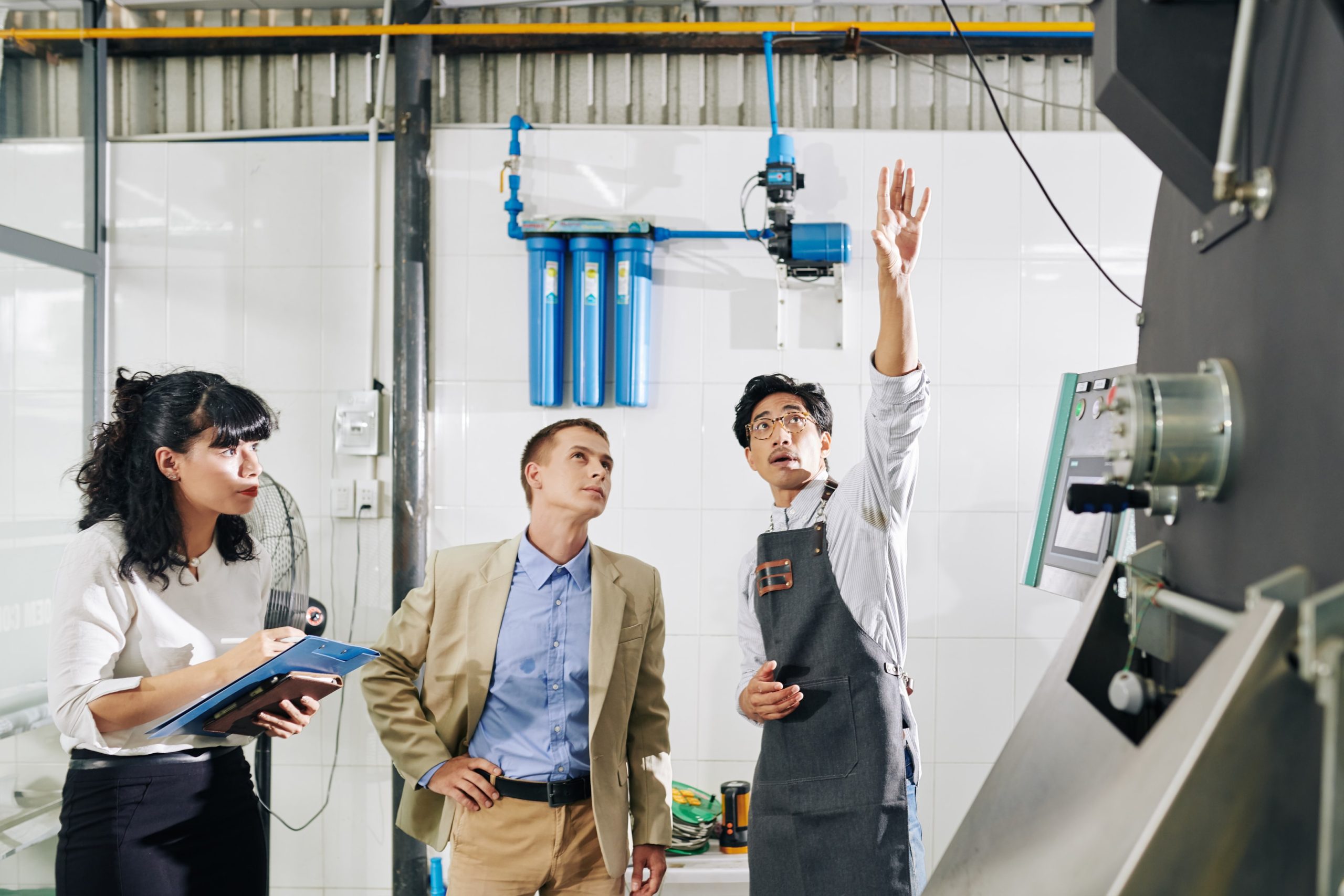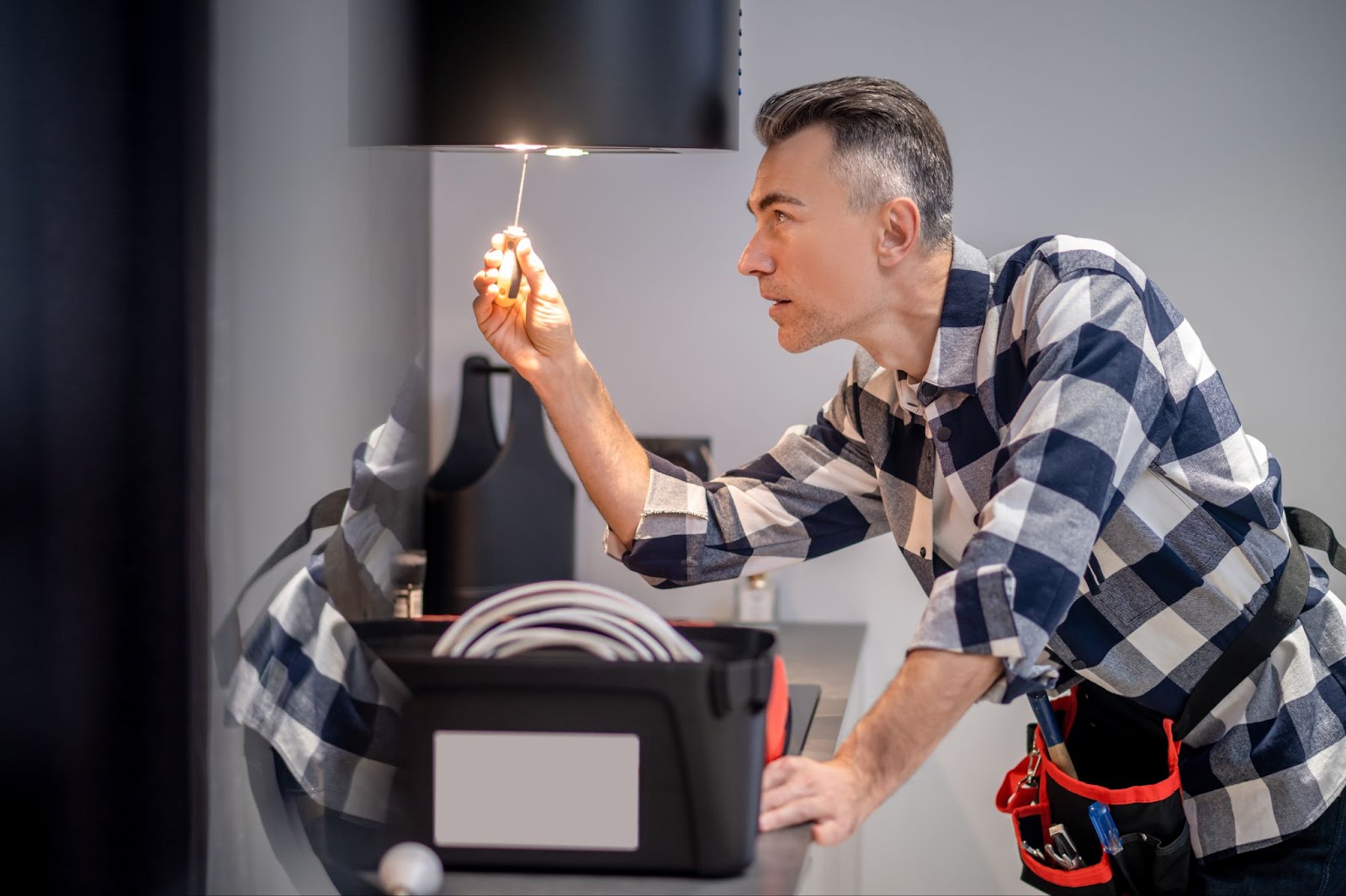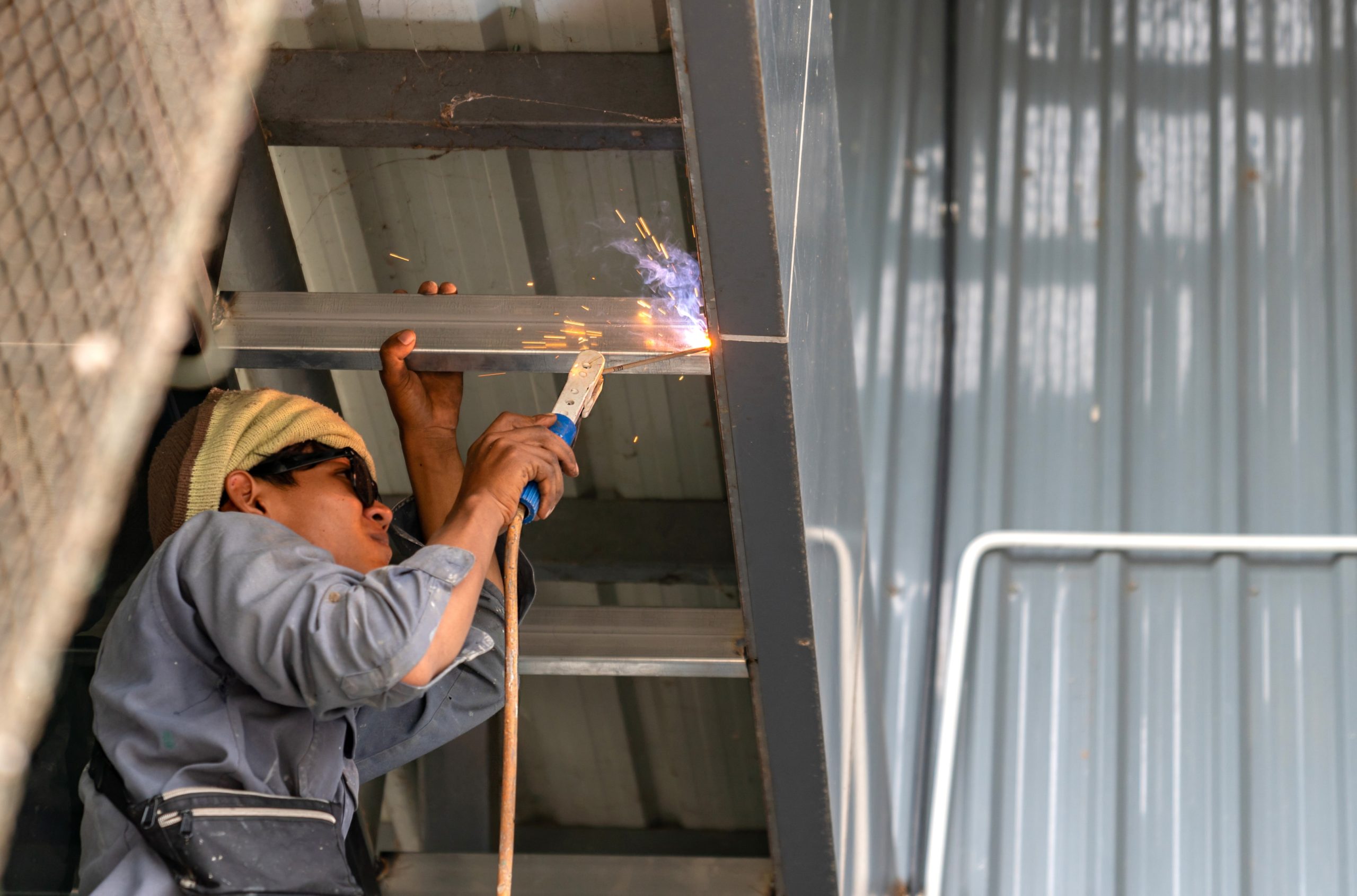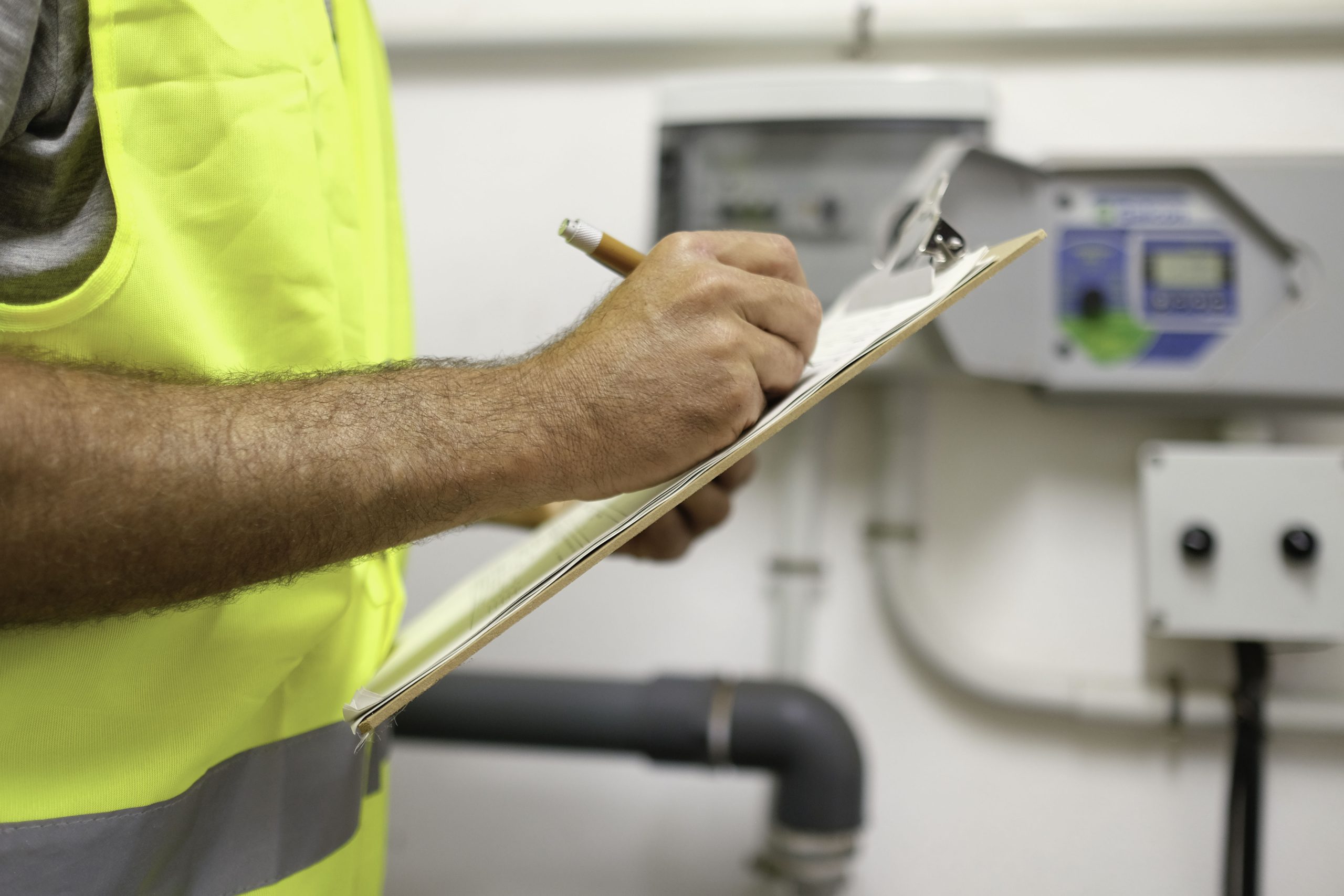How much damage can one plumbing failure cause in a commercial building?
With commercial plumbing services generating $169.8 billion in annual revenue across the U.S., it’s clear how vital these systems are to business operations. A single leak or blocked drain can disrupt workflow, damage property, and lead to expensive utility costs.
In this article, you’ll learn the top benefits of regular commercial plumbing maintenance and how management software can make preventative maintenance easier and more reliable.
Commercial Plumbing Maintenance Isn’t Optional – Here’s Why
Most commercial properties wait until something breaks before calling for help. But skipping routine inspections or holding off on minor fixes often leads to:
- Mold growth and health hazards
- Water damage to flooring, walls, and plumbing equipment
- Higher utility bills from active leaks and water waste
- Emergency repairs that blow your budget
Plumbing problems don’t just go away. Ignoring small issues is the fastest way to end up with significant problems.
Regular maintenance helps your plumbing infrastructure last longer. It keeps commercial plumbing systems functioning properly and prevents costly disruptions. Even something as simple as clogged drains can lead to water damage, foul odors, and business interruptions if left unaddressed.
If you want to avoid surprise bills and keep your building running without disruptions, regular plumbing care is a solid place to start. It helps prevent clogs, protects your property, and supports a healthy environment for the people who use your space every day.
How Plumbing Software Helps You Stay on Top of Maintenance
Managing a facility or multiple commercial properties is already a full-time job. Trying to keep track of inspections, repairs, and service calls with notes or spreadsheets just adds to the chaos.
Plumbing software changes that. It gives you visibility into everything going on with your plumbing systems without making the process more complicated.
Plumbing management software helps you:
- Schedule and track routine inspections
- Monitor plumbing work across all your commercial facilities
- Keep a detailed history of plumbing services and repairs
- Assign tasks and follow up with vendors or teams
- Recognize early signs of plumbing issues before they spread
Everything lives in one place, so you’re not digging through paperwork or chasing updates. A well-maintained plumbing system depends on consistency, and software helps keep that consistency without relying on memory or manual logs.
Top 10 Benefits of Commercial Plumbing Maintenance
Plumbing problems rarely show up at a convenient time. Regular maintenance keeps your plumbing problems manageable before they lead to bigger repairs.
Let’s walk through what this kind of care can do for your property.
1. Fewer Plumbing Emergencies
Nobody wants to deal with a flooded restroom or backed-up sewer line in the middle of the workday. Emergencies bring stress, delays, and bills that are hard to predict.
Regular plumbing work helps reduce those surprise failures. Here’s how:
- Catches early signs like slow drains, rusted pipes, or leaking valves
- Keeps repairs planned instead of rushing through last-minute fixes
- Cuts costs by avoiding after-hours or weekend service rates
Quick example: A small office building ignored floor drain backups for months. One heavy rain later, water overflowed into two units, damaging furniture and flooring. A basic inspection and clean-out could have prevented it.
You don’t need a disaster to take maintenance seriously. A few routine checks can help avoid plumbing emergencies that bring business to a halt.
2. Longer Lifespan for Your Plumbing Equipment
Plumbing equipment isn’t cheap, and replacing it too soon hurts your budget. When valves, pipes, or water heaters go unchecked, they wear out faster. Small problems build up and shorten the life of the entire system.
Routine maintenance helps extend the lifespan of pipes, plumbing valves, water heaters, and other equipment by keeping everything clean and working as intended. It also gives you a better sense of when parts need simple repairs instead of full replacements.
3. Lower Utility Bills for Commercial Buildings
Water waste can quietly inflate your utility bills, especially in commercial settings where usage is high. Small issues like leaky faucets or inefficient fixtures often go unnoticed but can lead to substantial costs over time.
In fact, water leaks account for about 14% of water usage in businesses across the country. This not only wastes water but also increases your utility expenses.
Regular plumbing maintenance helps identify and address these inefficiencies, leading to:
- Detection and repair of hidden leaks
- Replacement of outdated fixtures with water-saving alternatives
- Optimization of water pressure to prevent excess usage
By proactively managing your plumbing systems, you’ll notice noticeable reductions in your utility expenses.
4. Fewer Service Disruptions
Plumbing failures interrupt work and create a bad experience for anyone in the building. In commercial settings, a blocked restroom or broken water heater can lead to complaints, downtime, or temporary closures.
Regular maintenance helps prevent these issues by catching problems before they get worse. When plumbing fixtures and systems are checked consistently, they are far more likely to keep running without interruption.
Keeping the water on and the restrooms open keeps business moving without avoidable delays.
5. Better Water Pressure and Proper Drainage
Low water pressure and slow drains can disrupt daily routines and frustrate employees, tenants, or customers.
Routine inspections help catch buildup, mineral deposits, or partially blocked sewer lines that affect water pressure. They also uncover drainage problems that could lead to clogs or backups.
Maintaining consistent flow and proper drainage supports a better experience for everyone using the space. It also reduces the risk of water damage or overflows.
6. Safer and Healthier Spaces
Leaks and drainage issues can lead to mold growth, slippery floors, and foul smells. These problems affect both safety and hygiene, especially in high-traffic areas like restrooms and kitchens.
In commercial buildings, regular plumbing maintenance helps prevent conditions that put people at risk. It keeps the environment clean, dry, and comfortable for everyone who uses the space.
7. Cleaner Restrooms and Shared Spaces
Dirty restrooms leave a bad impression. Slow drains, leaky faucets, and worn-out plumbing fixtures make the space harder to keep clean and more frustrating to use.
Regular plumbing maintenance helps avoid those issues. It keeps plumbing equipment in good shape, supports proper drainage, and reduces the chances of water pooling on floors or behind walls.
People notice when restrooms and break areas work like they should (and shouldn’t). It shows that the property is being taken care of and builds trust with tenants, staff, and customers.
8. Predictable Repair Costs
Emergency plumbing repairs can blow through your budget fast. Parts cost more, labor rates spike after hours, and you rarely have time to compare quotes.
With regular maintenance, repair needs are easier to spot early. You can plan ahead, schedule service during regular hours, and avoid being caught off guard by last-minute fixes.
This approach helps control expenses and keeps repair costs manageable.
9. Better Compliance and Safety
Commercial facilities often need regular plumbing inspections to meet health and safety standards. Ignoring those requirements can lead to violations, fines, or tenant complaints.
Routine maintenance keeps your plumbing systems in working order and helps you stay prepared for inspections. It also helps document plumbing work, which is useful when proving that your building meets local codes.
10. Higher Property Value
Buyers and tenants pay attention to the condition of plumbing systems. Signs of neglect, like slow drains, leaky fixtures, or water damage, can raise red flags during walk-throughs or inspections.
Regular maintenance keeps plumbing equipment working and helps show that the property has been cared for. It also means fewer repairs for the next owner or occupant to deal with.
A maintained plumbing system adds value and supports a stronger long-term interest in the property.
What Should Commercial Plumbing Maintenance Include?
The goal is to keep your plumbing systems working without surprises. Here are the basics that should be part of any maintenance plan:
Inspections
Regular inspections catch small issues before they turn into bigger problems. That includes checking for water leaks, testing water pressure, and looking over visible plumbing fixtures and connections.
Drain and Sewer Line Checks
Slow drains or bad smells often point to hidden buildup. Flushing, snaking, or scoping drain and sewer lines helps prevent clogs and backups.
Valve and Fixture Testing
Plumbing valves and fixtures wear down over time. Testing them regularly helps prevent failure, especially in older plumbing infrastructure.
Water Heater Servicing
Commercial water heaters should be flushed to remove sediment and inspected for performance and safety.
Grease Trap and Backflow Prevention
In certain buildings, like restaurants or medical facilities, grease traps and backflow devices need regular cleaning and certification.
Usage Tracking
Keeping an eye on usage patterns helps spot abnormal spikes in water bills. This can flag hidden plumbing problems like leaky faucets or cracked pipes.
All of these tasks help support the larger plumbing network that keeps your building functional day to day.
If you’re using plumbing management software, logging these tasks makes it easier to stay consistent and document everything for future reference.
Key Features to Look for in Plumbing Management Software
Keeping track of plumbing work across commercial buildings isn’t easy. Quality software helps you stay organized and makes it easier to keep maintenance on schedule.
Look for features that support clear communication, task tracking, and simple day-to-day use:
- Maintenance scheduling: Set recurring tasks like inspections, equipment checks, and fixture servicing so important steps don’t get missed.
- Work order management: Assign plumbing jobs, update progress, and track completion across your sites without relying on scattered notes or email chains.
- Service history tracking: Keep a record of past repairs, part replacements, and maintenance on plumbing systems. This helps you spot repeat issues and plan future work.
- Mobile access: Let your team log updates or check assignments from the field. No need to head back to a desk just to mark a job complete.
- Reporting and alerts: Get visibility into service frequency, utility usage, and areas that might need more attention. Automated alerts help flag unusual patterns early.
The best software helps you stay organized without adding extra steps. If it fits how your team already works and reduces the usual back and forth, it’s worth having around.
Minimize Plumbing Disruptions With Trillium’s 24/7 Service Management
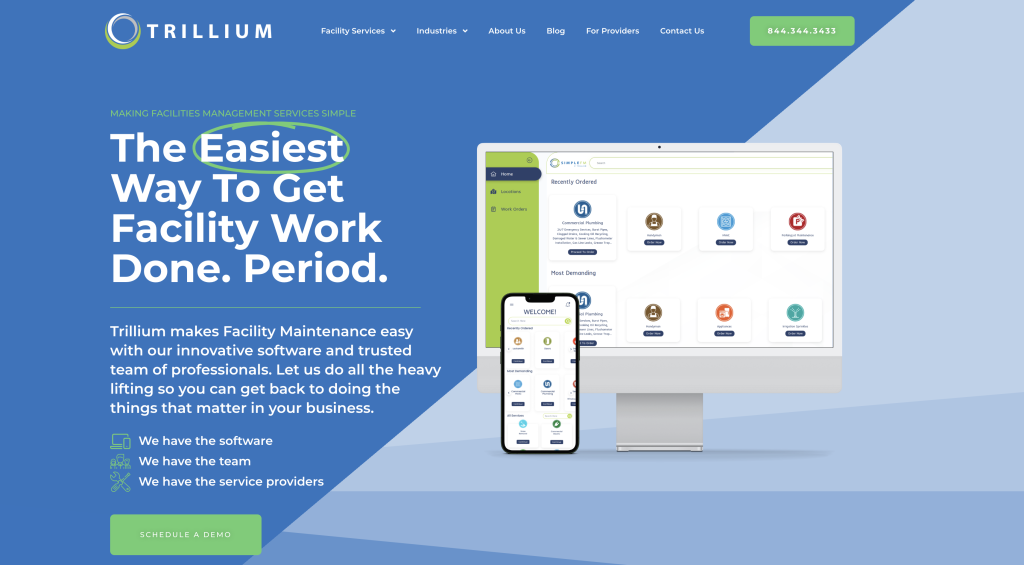
Plumbing issues can throw off an entire workday. But with the right support, these problems don’t have to catch you off guard.
Trillium is a facility maintenance software solution that can help you manage plumbing and other service needs without extra fees or long-term commitments. You can submit work orders, schedule repairs, and monitor progress across all your commercial locations in one platform.
Trillium makes it easier to organize proactive plumbing maintenance, track completed tasks, and respond faster when plumbing problems do come up. Use it to avoid costly repairs, apply water conservation tips, and request quality plumbing services through a network of reliable providers.
No hidden markups. No contracts. Just a better way to manage your plumbing work.
Need a maintenance tool that helps you save money?
Explore Trillium’s software today!
FAQs About Commercial Plumbing Maintenance
What is commercial plumbing maintenance?
Commercial plumbing maintenance refers to the regular servicing, inspection, and repair of plumbing systems in commercial settings. This can include checking for leaks, testing water pressure, inspecting fixtures, and following a commercial plumbing maintenance checklist to keep everything in working order.
How much is a commercial plumbing service?
The cost of commercial plumbing services depends on the size of the building, the type of service, and how often it’s needed. Some plumbing services charge hourly, while others offer flat-rate pricing for routine tasks or annual inspections.
Is commercial plumbing a hard job?
It can be. Commercial plumbing involves working with complex systems, high-capacity lines, and a variety of plumbing fixtures. It often requires more specialized tools and planning compared to residential work, especially in larger buildings.
Work may also involve hot water systems, drainage design, and pressure regulation. The goal is often not just to fix problems, but to focus on preventing major repairs through consistent upkeep and system checks.
What is maintenance in plumbing?
Maintenance includes routine inspections, repairs, and adjustments to help plumbing systems deliver a safe, consistent water supply and drain waste properly. It supports optimal performance, protects sanitary conditions, and helps save water over time.

